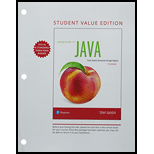
Two-dimensional array:
A two dimensional array is also called as a multi-dimensional array; a multidimensional array is that all the identical arrays are put together into a single array.
- This is useful for storing same type of multiple sets of data in same place.
- The main advantage is that one-dimensional array can hold only one set of value, whereas, two-dimensional array can hold multiple sets of data in the form of rows and columns.
- The structure of a multi-dimensional array is lookalike a table (that is combination of rows and columns); it contains same type of columns.
- The first size declarator in the two-dimensional array represents row and the second size declarator represents column.
- The two dimensional array can have multiple length fields, which holds the number of rows.
- Each row in the two dimensional array has a length field which holds the number of columns.
Syntax:
The syntax of two dimensional arrays is as follows:
datatype array_name [number_of_rows][number_of_columns];
Explanation of Solution
b. Number of columns in the array:
Syntax:
The syntax of two dimensional arrays is as follows:
datatype array_name [number_of_rows][number_of_columns];
Explanation of Solution
c. Number of elements in the array:
Syntax:
The syntax of two dimensional arrays is as follows:
datatype array_name [number_of_rows][number_of_columns];
Given array definition:
double[][] sales = new double[8][10];
...
Explanation of Solution
d. Statement that stores a number in the last column of the last row in the array:
Syntax:
The syntax of two dimensional arrays is as follows:
datatype array_name [number_of_rows][number_of_columns];
Given array definition:
double[][] sales = new double[8][10];
There are 8 rows and 10 columns in the given two-dimensional array.
Index type of an array:
The index type of an array is an integer. An integer is a number without the fractional or decimal part...
Want to see the full answer?
Check out a sample textbook solution
Chapter 7 Solutions
Starting Out With Java: From Control Structures Through Objects, Student Value Edition (7th Edition)
- Describe three (3) Multiplexing techniques common for fiber optic linksarrow_forwardCould you help me to know features of the following concepts: - commercial CA - memory integrity - WMI filterarrow_forwardBriefly describe the issues involved in using ATM technology in Local Area Networksarrow_forward
- For this question you will perform two levels of quicksort on an array containing these numbers: 59 41 61 73 43 57 50 13 96 88 42 77 27 95 32 89 In the first blank, enter the array contents after the top level partition. In the second blank, enter the array contents after one more partition of the left-hand subarray resulting from the first partition. In the third blank, enter the array contents after one more partition of the right-hand subarray resulting from the first partition. Print the numbers with a single space between them. Use the algorithm we covered in class, in which the first element of the subarray is the partition value. Question 1 options: Blank # 1 Blank # 2 Blank # 3arrow_forward1. Transform the E-R diagram into a set of relations. Country_of Agent ID Agent H Holds Is_Reponsible_for Consignment Number $ Value May Contain Consignment Transports Container Destination Ф R Goes Off Container Number Size Vessel Voyage Registry Vessel ID Voyage_ID Tonnagearrow_forwardI want to solve 13.2 using matlab please helparrow_forward
- a) Show a possible trace of the OSPF algorithm for computing the routing table in Router 2 forthis network.b) Show the messages used by RIP to compute routing tables.arrow_forwardusing r language to answer question 4 Question 4: Obtain a 95% standard normal bootstrap confidence interval, a 95% basic bootstrap confidence interval, and a percentile confidence interval for the ρb12 in Question 3.arrow_forwardusing r language to answer question 4. Question 4: Obtain a 95% standard normal bootstrap confidence interval, a 95% basic bootstrap confidence interval, and a percentile confidence interval for the ρb12 in Question 3.arrow_forward
 EBK JAVA PROGRAMMINGComputer ScienceISBN:9781337671385Author:FARRELLPublisher:CENGAGE LEARNING - CONSIGNMENT
EBK JAVA PROGRAMMINGComputer ScienceISBN:9781337671385Author:FARRELLPublisher:CENGAGE LEARNING - CONSIGNMENT Microsoft Visual C#Computer ScienceISBN:9781337102100Author:Joyce, Farrell.Publisher:Cengage Learning,
Microsoft Visual C#Computer ScienceISBN:9781337102100Author:Joyce, Farrell.Publisher:Cengage Learning, Programming with Microsoft Visual Basic 2017Computer ScienceISBN:9781337102124Author:Diane ZakPublisher:Cengage Learning
Programming with Microsoft Visual Basic 2017Computer ScienceISBN:9781337102124Author:Diane ZakPublisher:Cengage Learning- Programming Logic & Design ComprehensiveComputer ScienceISBN:9781337669405Author:FARRELLPublisher:Cengage
 C++ for Engineers and ScientistsComputer ScienceISBN:9781133187844Author:Bronson, Gary J.Publisher:Course Technology Ptr
C++ for Engineers and ScientistsComputer ScienceISBN:9781133187844Author:Bronson, Gary J.Publisher:Course Technology Ptr C++ Programming: From Problem Analysis to Program...Computer ScienceISBN:9781337102087Author:D. S. MalikPublisher:Cengage Learning
C++ Programming: From Problem Analysis to Program...Computer ScienceISBN:9781337102087Author:D. S. MalikPublisher:Cengage Learning





